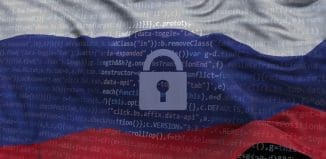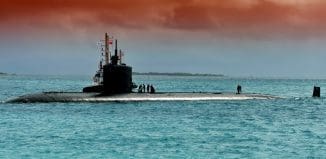New Unconventional Warfare Discovery Methods
This post is also available in:  עברית (Hebrew)
עברית (Hebrew)
The Pentagon is studying gray zone conflict, AKA hybrid warfare, beginning with a focus on Russia and later moving on to study Iran and China, the acting assistant defense secretary for special operations and low-intensity conflict, Theresa Whelan, told members of Congress.
Following a research conducted at Johns Hopkins University on the nature of Russian unconventional warfare, U.S. Special Operations through the Combating Terrorism Technical Support Office, is looking at “developing predictive analytic technologies that will help identify when countries are utilizing unconventional warfare techniques at levels essentially below our normal observation thresholds,” Whelan said during a House Armed Services Emerging Threats and Capabilities Subcommittee hearing.
The study will help identify early evidence of unconventional warfare, she added, noting that once her office completes the research on Russian unconventional warfare, it will move on to developing a strategy for Iran and China.
According to defensenews.com, Russian aggression has been characterized by the insertion of special forces that try to discreetly rile up ethnic Russians against the West in countries along its border. Russia’s surprise annexation of Crimea in 2014 has sparked fear in surrounding countries that something similar could take place within their own borders.
Recently, the top U.S. military commander in Europe said the U.S. has not done enough to reinforce its own and NATO’s nascent efforts to fight Russia’s prolific propaganda against European allies — considered to be classic “gray zone” activity. By definition, special operations forces in the region would likely be among the first to notice such activity.
The fiscal year 2016 National Defense Authorization Act required the defense secretary and the chairman of the Joint Chiefs of Staff along with other U.S. government departments and agencies to develop a strategy to counter unconventional warfare threats posed by adversarial state and non-state actors. Unconventional warfare “means activities conducted to enable a resistance movement or insurgency to coerce, disrupt, or overthrow a government or occupying power by operating through or with an underground, auxiliary, or guerrilla force in a denied area,” according to the legislation.
The Pentagon has “had to shift resources to focus on this and develop capabilities and knowledge bases that had, to a certain extent, atrophied over the years,” Whelan said. “But also, the nature of UW has fundamentally changed because of 21st-century technologies and techniques. We really in many ways have been starting from scratch.”
In order to complete the strategy, Whelan added,” the Pentagon is working with interagency partners the ways that our adversaries are using it.”
Studies already conducted by the Pentagon, as well as Georgetown University have shown adversaries, “particularly the more sophisticated ones,” are focusing on “seams between our organizational entities and trying to exploit those seams and decision-making cycles in order to gain advantage on us in the space that essentially is below conventional war,” Whelan said.
She added the Pentagon does expect to have an interim “answer with our thoughts” delivered to Congress before the end of June.




























